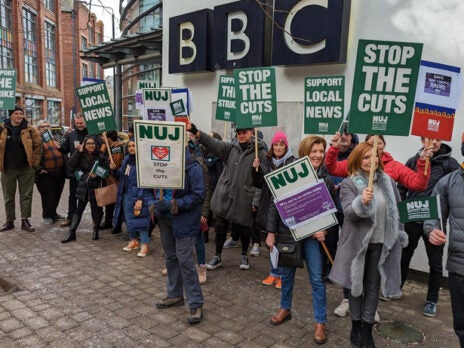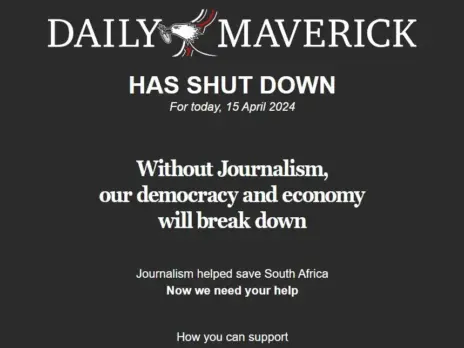Weighing in at 182g, an average copy of the Daily Mirror will release 174g of carbon dioxide into the atmosphere during the process of production. The figure is the finding of a detailed carbon audit carried out late last year by Trinity Mirror and the Carbon Trust. The study examined the energy use of Trinity Mirror and all of the suppliers that contribute to the production of the Mirror and its glossy weekend Celebs supplement.
Trinity Mirror had already been working to reduce its own carbon dioxide emissions for several years, but only turned its attention to its supply chain at the suggestion of the trust.
‘We’d been looking for four years at what we did. We weren’t looking at what our supply chain did front and back end,’says Trinity Mirror group building services manager Allen Palmer, who coordinated the effort with the publisher’s suppliers.
The Carbon Trust report documented that just 20 per cent of the emissions involved in producing the Mirror occur within Trinity Mirror’s own operations. The rest was caused elsewhere, by suppliers or distributors. By far the biggest contributor –around 70 per cent – is the production of paper.
‘The actual printing bit is minuscule in the whole scale of things,’says Palmer. ‘If you look at the breakdown, the production of the newspaper is quite small. The really big bit is the production of the actual paper itself.”
Transparency
Trinity Mirror’s effort isn’t unique. News organisations have been becoming more transparent about their own impact on the environment. These frank analyses might be driven by pragmatism – with an eye toward investing in long-term energy efficiency gains – or more idealistic objectives, but one common motivation is to fend off charges of hypocrisy.
‘If we are to connect with our audiences on this issue, we learned that we must first get our own house in order,’Rupert Murdoch said in a speech last month, in which he launched an ‘energy initiative’committing the rest of News Corporation to follow BSkyB’s lead and become completely carbon-neutral by 2010.
‘We’re not a manufacturer, or an airline, but we do use energy. Printing and publishing newspapers, producing films and television programmes, operating 24-hour newsrooms. It all adds carbon to the atmosphere.”
Quite a lot of carbon, in fact. Murdoch revealed that, in 2006, his global empire had a carbon footprint of 641,150 tonnes – 32 per cent of which was accounted for by its newspapers around the world.
Getting their own house in order first was certainly part of the thinking at The Gazette in Montreal, when, at the end of April, it turned its critical eye on itself with an in-depth investigation into its own environmental impact.
‘We in the newspaper business tend to put others on the spot, be they businesses, government or other institutions, so in order to give ourselves a better understanding of the issues that everybody faces,’says editor-in-chief Andrew Phillips.
‘To give us a better platform to put others on the spot, we thought we’d start with ourselves and put ourselves on the spot by looking at our own practices and our own environmental footprint.”
Reporters, led by assistant managing editor Catherine Wallace, examined every aspect of the newspaper’s life cycle, from paper production and printing to distribution and finally recycling.
The Gazette found that its annual footprint was 11,887 tonnes of carbon dioxide. Production of the 15,000 tonnes of newsprint The Gazette uses each year accounted for 63 per cent of the total.
‘I thought the result would be less favourable,’says Phillips. ‘I didn’t really realise how much the newspaper industry has done over the last 20 years or so in terms of using less paper. The pulp and paper industry that produces our newsprint has gone miles ahead in cutting down its pollution.”
Phillips says his paper drew inspiration from some of the similar initiatives in Britain, particularly The Guardian’s broad social audit. While a supply-chain carbon audit features in The Guardian’s approach, the paper’s executive editor Jo Confino stresses that the social audit focuses more on a holistic idea of sustainability.
‘Ethics is not a pick-and-mix sweet shop,’he says. ‘It’s too easy to fixate just on climate change. If one of the [paper’s] main jobs is to uncover wrongdoing in other institutions and encouraging them to be more transparent, then it is patently wrong if they are not doing it themselves.”
Sustainable suppliers
Confino says news organisations can use their position as a major purchaser to influence the behaviour of their suppliers, simply by making environmental impact a factor in routine purchasing decisions: ‘We’re currently renegotiating our distribution contract. If we had been doing this three years ago, we would have gone for price, quality and security of delivery. Now we’re adding another layer – sustainability. We’re asking what they are doing to reduce their carbon footprint.”
The same approach applies to the smaller-scale purchasing decisions made in the newsroom.
‘Say you want to interview someone in Australia. Your options are that you have the choice of phoning them or flying someone out to meet that person. From a purely editorial quality perspective, you fly, because you’re likely to get a better story that way. But then you look at it through the lens of cost. You might determine it’s worth spending the money on that flight. But add the lens of sustainability and it looks different again.”
In the coming months, The Guardian hopes to begin measuring the environmental impact of its journalists’ use of taxis and air travel. Creating a measure to make effects visible is the first step towards changing behaviour, Confino says.
The Guardian is working with Forum for the Future to develop a programme bringing together its sustainability initiatives, and details are set to be presented to the board this week. ‘We’re hoping to go well beyond an energy initiative,’says Confino.
Email pged@pressgazette.co.uk to point out mistakes, provide story tips or send in a letter for publication on our "Letters Page" blog







